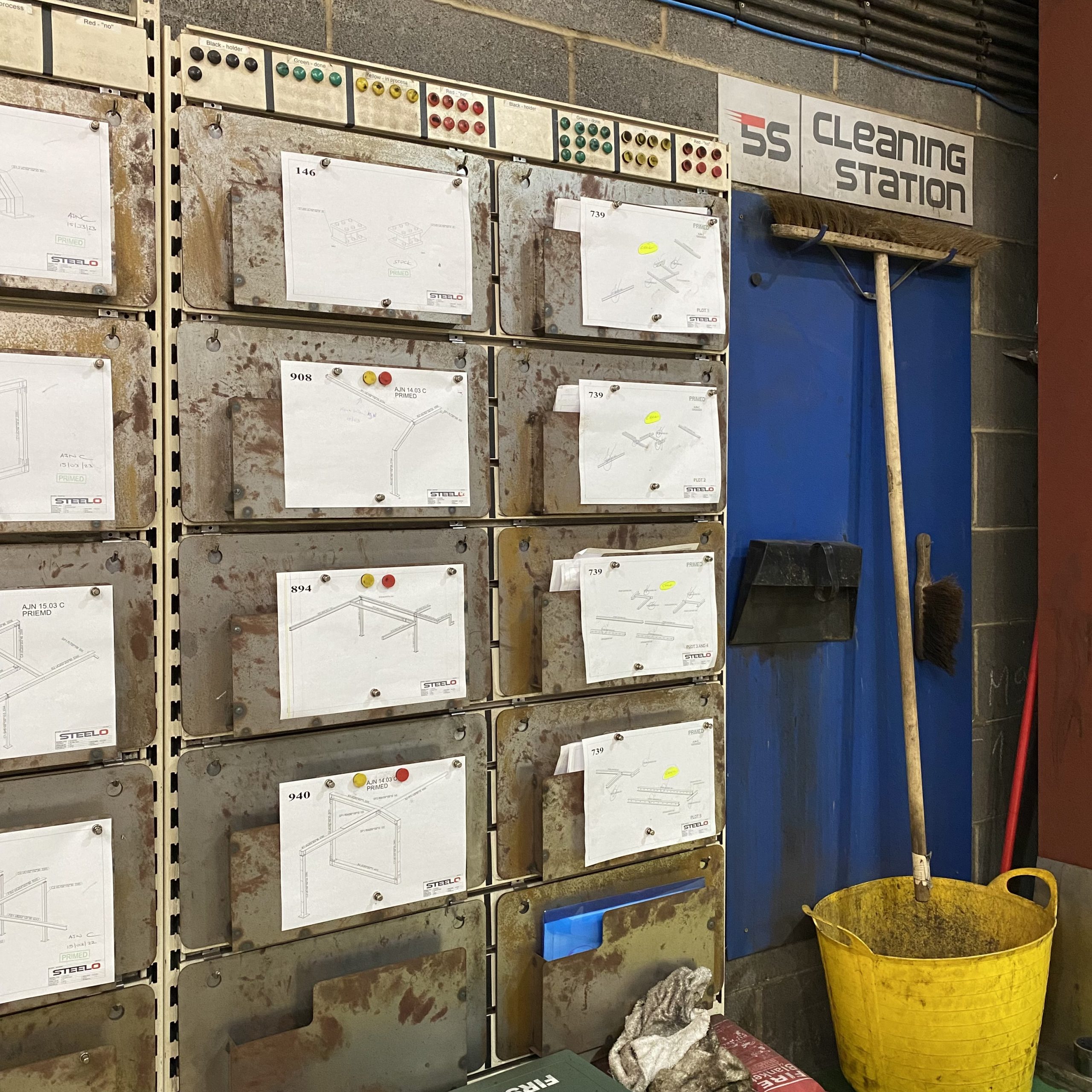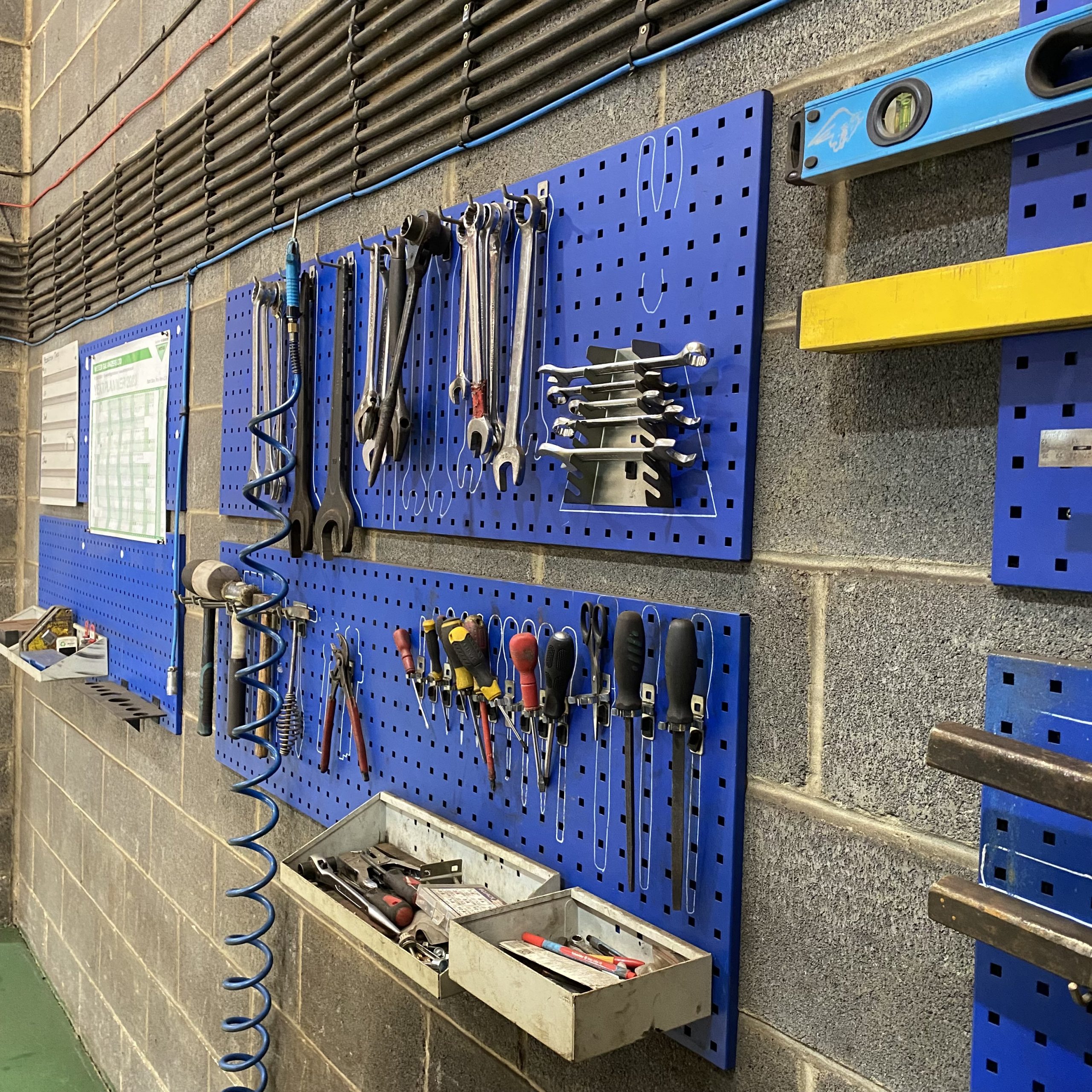At Steelo, we understand the importance of maintaining an organized and efficient workspace. For the last eight years, we have been using the 5S theory to ensure that our manufacturing business runs smoothly and efficiently. The 5S theory is a workplace organization methodology that aims to increase productivity and efficiency by organizing and maintaining a clean and orderly workspace.
In this blog post, we will discuss how manufacturing businesses can apply the 5S theory to improve their productivity and efficiency, and we will share our own experience in implementing the 5S theory in our company. By the end of this article, you will have a better understanding of how the 5S theory can bring significant benefits to manufacturing business and how to apply it to your own organization.

WHAT IS 5S?
The 5S theory is a workplace organization methodology that aims to increase productivity and efficiency by organizing and maintaining a clean and orderly workspace. This methodology was developed by the Japanese manufacturing industry and has been widely adopted worldwide.
In a manufacturing business, implementing the 5S theory can bring significant benefits, such as reduced waste, increased safety, and improved quality. Here are the five stages of the 5S theory and how they can be applied to a manufacturing business:
- Sort – The first step is to sort and separate all items in the workspace. Identify which items are necessary and which ones are not. This helps to eliminate unnecessary items, creating a more efficient workspace.
- Set in Order – Once you have sorted the items, the next step is to organize them. Assign a specific location for each item, and ensure that they are stored in an easily accessible place. This helps to reduce the time spent searching for items and increases efficiency.
- Shine – This stage involves cleaning the workspace and equipment thoroughly. This not only improves the appearance of the workspace but also reduces the chances of equipment breakdown and increases safety.
- Standardize – In this stage, you establish clear standards and procedures for maintaining the workspace. This ensures that everyone is following the same practices, which leads to consistency and improved efficiency.
- Sustain – The final stage involves maintaining the improvements made in the previous stages. It is essential to establish a system for continuous improvement to ensure that the workspace remains organized and efficient.

Benefits of 5s in a manufacturing business
By implementing the 5S theory, manufacturing businesses can improve their productivity and efficiency significantly. Here are some of the benefits of applying the 5S theory to a manufacturing business:
- Improved safety – An organized workspace reduces the risk of accidents and injuries, leading to a safer work environment.
- Increased efficiency – With an organized workspace, employees spend less time searching for items and more time on value-adding activities, leading to increased productivity.
- Reduced waste – An organized workspace reduces the chances of overproduction, excess inventory, and wasted time, leading to reduced costs.
- Improved quality – An organized workspace allows for better quality control, reducing the chances of defects and rework, leading to improved customer satisfaction.
How do we apply 5S at Steelo?
As part of our approach to Lean Manufacturing, 5S was always on our list for methodologies to be implemented at Steelo. When were setting up our new workshop in 2015, We started by identifying the different areas in our workspace that needed improvement and created a plan of action. When it came to the implementation process, we broke it done into manageable steps, starting with the first stage of the 5S theory…
SORT
Sorting involved identifying items in our workspace that were no longer needed and disposing of them. We created a system for categorizing items based on their frequency of use and assigned them a specific location for easy access.
SET IN ORDER
This was followed by the Set in Order stage, where we organized our workspace and assigned a place for each item. We found that this not only made our workspace more organized but also made it easier for us to find things.
SHINE
Next was the Shine stage, where we cleaned our workspace and equipment thoroughly.
STANDARDIZE
This was followed by Standardize, where we established clear standards and procedures for maintaining our workspace.
SUSTAIN
Lastly, we implemented the Sustain stage, where we created a system for continuous improvement to ensure that our workspace remained organized and efficient.
In conclusion, implementing the 5S theory in a manufacturing business can bring significant benefits, such as improved safety, increased efficiency, reduced waste, and improved quality. By following the five stages of the 5S theory, manufacturing businesses can create a more organized, efficient, and productive workspace.


